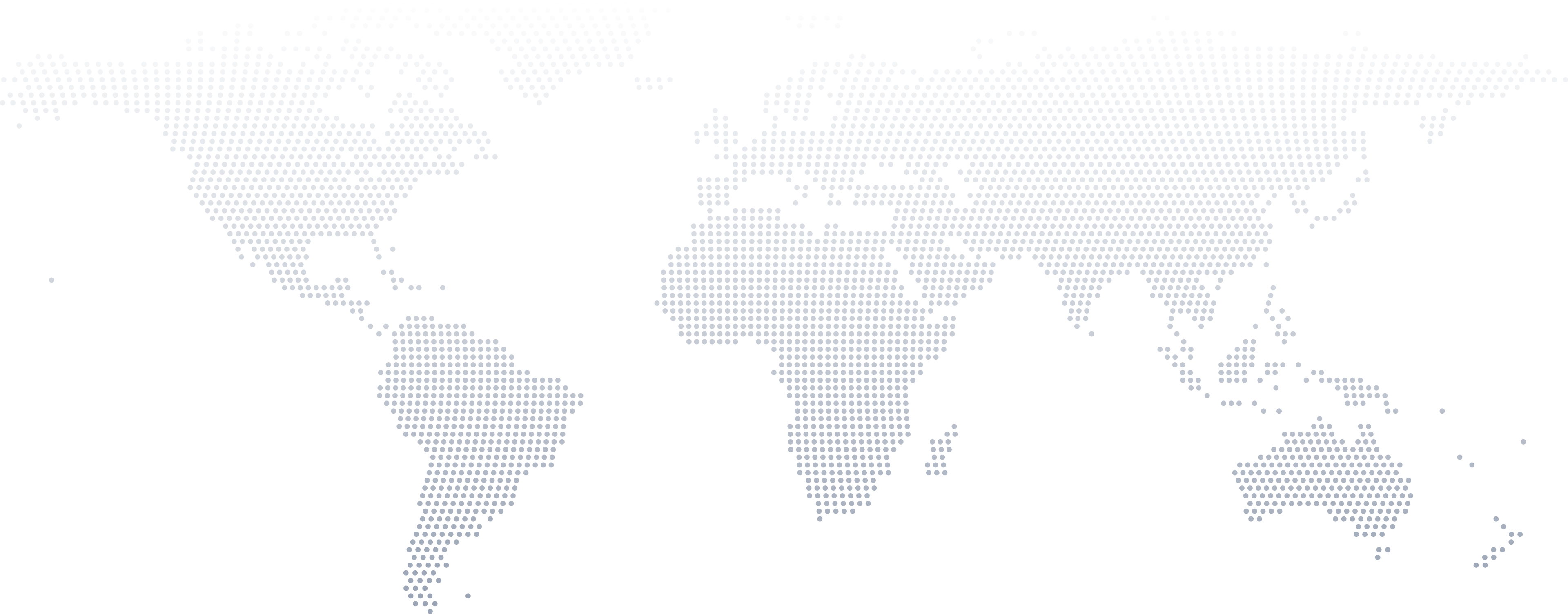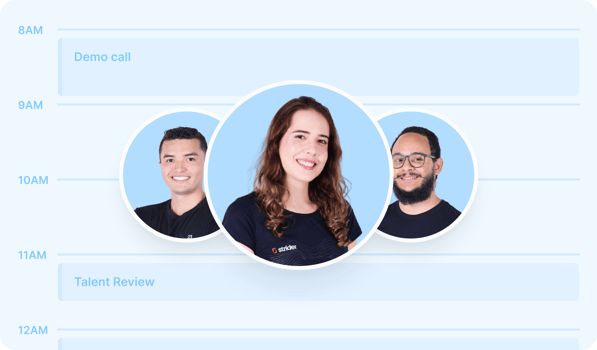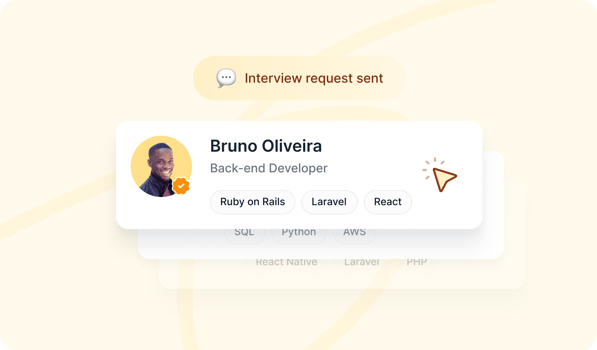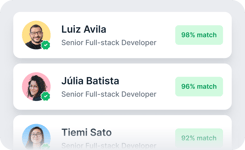Hire Remote Three.js Developers Effectively
Three.js is a powerful and popular choice for software development and web graphics libraries. As a web developer or a business looking to enhance your web applications with stunning visuals and interactive elements, hiring skilled Three.js developers can be a notable change.
Three.js is a software development JavaScript library that provides various tools and functionalities for creating web animations, data visualizations, virtual reality experiences, and more. It simplifies working with WebGL, a JavaScript API for rendering interactive 2D and 3D graphics within any compatible web browser.
To ensure a successful hiring process for Three.js software developers, it is crucial to understand the required skills, experience, and qualities that make a great candidate. In this article, we will explore the key factors to consider and effective strategies for hiring the top three js developers who can meet your business needs and contribute to the success of your web development projects.
What to Look for When Hiring Three.js Developers
Technical Skills
When hiring Three.js developers, it is essential to assess their technical skills to ensure they have the expertise to work with the web graphics library effectively. Proficiency in JavaScript is a fundamental requirement as Three.js is built on this programming language. Additionally, knowledge of HTML and CSS is crucial for seamlessly integrating Three.js into web applications.
A solid understanding of 3D graphics concepts, WebGL, and shader programming is highly desirable. For a full-stack developer, experience with other JavaScript frameworks and libraries, such as React or Angular, can be beneficial for building interactive and dynamic web applications. Furthermore, familiarity with data visualization techniques and virtual reality technologies can enhance the developer's capabilities in leveraging Three.js effectively.
Communication Skills
In addition to technical skills, persuasive communication skills are vital for Three.js developers. Effective communication is essential for collaborating with other team members, understanding project requirements, and providing updates on progress. Three.js developers should be able to articulate their ideas clearly, ask questions when needed, and actively participate in discussions.
They should be able to explain complex technical concepts to non-technical stakeholders, ensuring effective communication throughout the development process. Moreover, good listening skills are crucial for understanding client needs and translating them into actionable development tasks. Clear and concise communication fosters efficient teamwork and successful project outcomes.
WebGL Performance Optimization Techniques
WebGL performance optimization is a crucial topic to consider when hiring Three.js developers. Three.js allows for creating highly interactive and visually appealing web graphics but ensuring that the performance remains smooth and efficient is essential. Candidates should be familiar with optimization techniques, such as efficient memory management, minimizing draw calls, and using WebGL-specific features like Instanced rendering.
They should deeply understand how to optimize shaders and utilize texture atlases effectively. Knowledge of performance profiling tools and techniques can help identify bottlenecks and optimize rendering pipelines. Experience in implementing strategies to achieve smooth frame rates and optimal resource utilization is highly valuable in a Three.js developer.
Responsive Web Design with Three.js
The ability to create responsive web designs using Three.js is another important aspect to consider. Three.js developers should be capable of adapting their visualizations and graphics to different screen sizes and resolutions. They should understand responsive design principles and proficiently utilize CSS media queries and flexible layout techniques.
Experience in building mobile-friendly applications using Three.js, particularly for iOS and Android platforms, can be an added advantage. Candidates who can demonstrate their expertise in designing and implementing responsive web applications with Three.js are well-suited for delivering engaging user experiences across various devices.
Top 5 Three.js Developer Interview Questions
What is a shader in Three.js, and how can you create and apply custom shaders to objects?
A shader in Three.js refers to a small program that runs on the graphics card, generates pixel colors, and determines how light interacts with objects in a scene. It is an essential concept in computer graphics and plays a significant role in achieving realistic and visually appealing rendering effects. When you hire Three.js developers, it's crucial to ask this question to assess their understanding of shaders and their ability to create and apply custom shaders to objects.
By asking this question, you can gauge the candidate's knowledge of the graphics pipeline, shader languages, and familiarity with Three.js's shader implementation. A comprehensive answer should cover topics such as vertex shaders, fragment shaders, and using WebGL's shading language, GLSL (OpenGL Shading Language). A strong candidate will also demonstrate their ability to create custom shaders to achieve specific rendering effects, such as reflections, refractions, or advanced lighting models.
Explain the concept of texture mapping in Three.js. How can you apply textures to objects?
Texture mapping in Three.js involves applying an image or a pattern, referred to as a texture, to the surface of a 3D object. This technique enhances the realism and detail of objects by providing them with color, patterns, or other visual attributes. When interviewing Three.js developers, asking about texture mapping helps evaluate their knowledge of web graphics library concepts and their ability to create visually appealing and interactive 3D scenes.
From the candidate's response to this question, you can learn much about their understanding of UV mapping, texture coordinates, and texture filtering techniques. A skilled developer should be able to explain different texture mapping projections, such as planar, cylindrical, or spherical mapping. Furthermore, the candidate should demonstrate proficiency in loading textures in Three.js, applying them to objects, and handling texture coordinates for correct mapping.
What is raycasting in Three.js? How can you use it to detect intersections between objects in a scene?
Raycasting is a fundamental technique in computer graphics that allows developers to detect intersections between objects in a 3D scene. In Three.js, raycasting involves casting a virtual ray from a specific point in the scene and determining if it intersects with any objects. This technique is essential for various interactive applications, such as object picking, collision detection, and user interaction.
By asking this question, you can assess a candidate's understanding of spatial algorithms and their ability to implement interactive features in Three.js. A suitable answer should cover the raycasting process, including creating a ray, defining collision detection logic, and managing the results. The candidate should also demonstrate knowledge of the diverse types of raycasting available in Three.js, such as raycasting against meshes or points, and provide examples of how they have used raycasting in previous projects.
What is the purpose of buffer geometry in Three.js? How does it differ from regular geometry, and what are its advantages?
Buffer Geometry in Three.js is an optimized data structure used to represent the geometric information of 3D objects. Unlike regular geometry, which uses JavaScript arrays to store vertex data, buffer geometry utilizes WebGL's buffer objects to store and manipulate the data more efficiently. When you hire Three.js developers, asking about buffer geometry helps assess their understanding of performance optimization and their ability to work with large and complex 3D models.
You can gain valuable insights from the candidate's response to this question. A proficient developer should explain the advantages of buffer geometry, such as reduced memory consumption, improved rendering performance, and the ability to work directly with GPU buffers.
They should also demonstrate knowledge of buffer attributes, index buffers, and creating and updating buffer geometry in Three.js. Additionally, the candidate should compare buffer geometry with regular geometry and highlight scenarios where buffer geometry is the preferred choice.
What are render targets in Three.js? How can you use them to achieve off-screen rendering or create advanced rendering techniques?
Render targets in Three.js are buffers that store the result of rendering operations. They allow developers to render a scene or specific objects into a texture rather than directly to the screen. This technique enables various advanced rendering effects, such as post-processing, shadows, reflections, or off-screen rendering for texture generation. When hiring Three.js developers, asking about render targets helps evaluate their knowledge of rendering techniques and ability to create visually appealing and dynamic scenes.
By asking this question, you can determine if a candidate understands the rendering pipeline, framebuffers, and post-processing effects. An ideal answer would cover creating and configuring render targets in Three.js, rendering scenes or objects to the targets, and using the resulting textures for further rendering operations. The candidate should also provide examples of advanced rendering techniques they have implemented using render targets, such as bloom, depth-of-field, or screen-space reflections.









